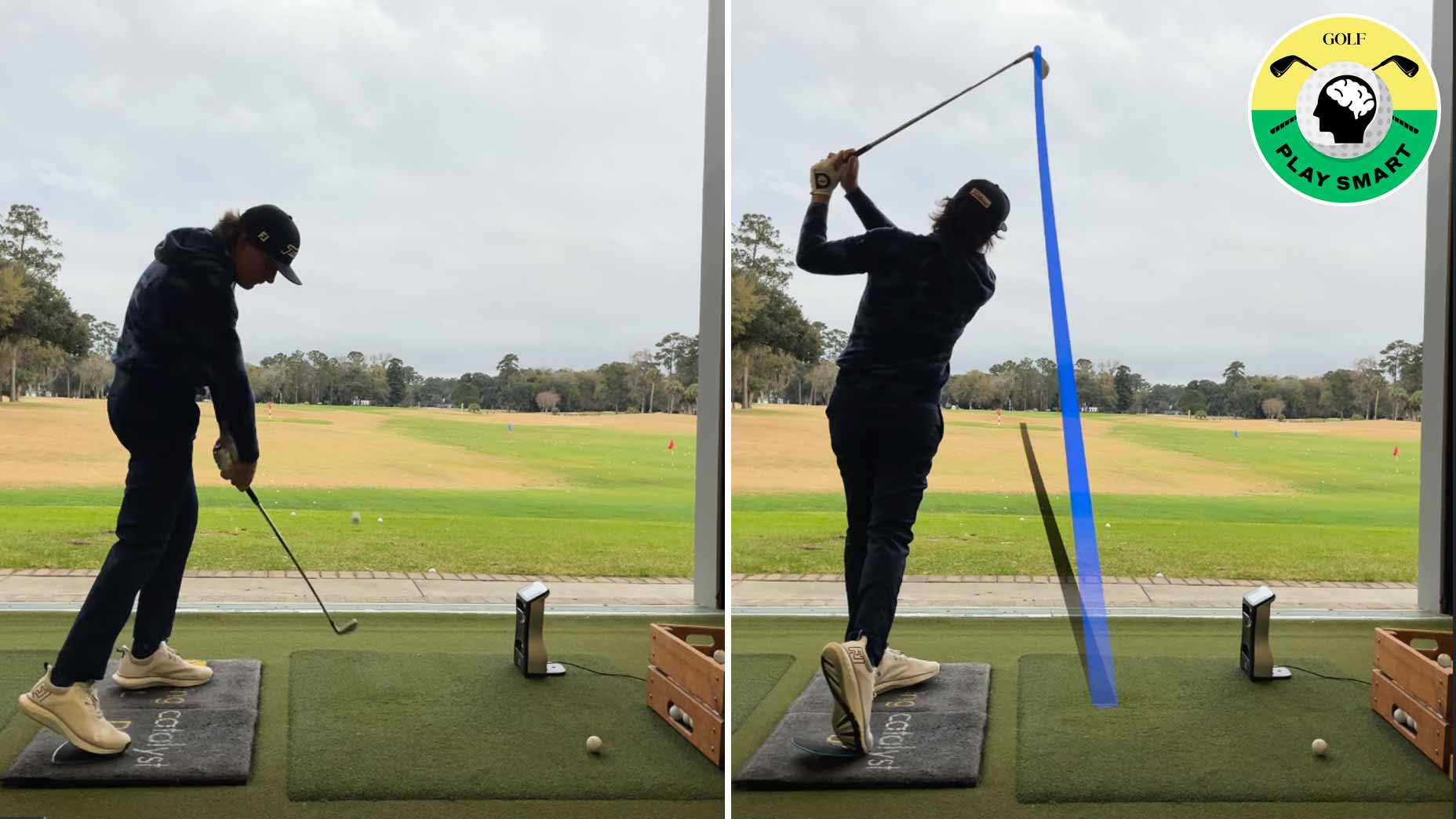Welcome to Shaving Strokes, a GOLF.com series in which we’re sharing improvements, learnings and takeaways from amateur golfers just like you — including some of the speed bumps and challenges they faced along the way.
If you battle inconsistent ball-striking (especially off the tee with your driver), there’s a good chance you fight an over-the-top golf swing, which often leads to an open clubface and a nasty slice.
Whether you’re a high-handicapper or someone trying to become a scratch golfer, coming over the top is a common swing flaw that can creep up at any moment. That’s because it’s easy to get lax during your golf swing and simply just extend the trail elbow out and away from the body — producing a “chicken wing” and an over-the-top swing path.
While it might be bad news when you do this, there is some good news: It’s fixable — as long as you know the right fundamentals to do so.
Since I often battle this problem with a driver in my hand, I tapped GOLF Teacher to Watch Adam Smith to see what tips he has to finally fix coming over the top. Instead of a laundry list of suggestions, Smith kept things fun and loose and suggests returning to my childhood for a simple feeling — skipping a rock across a pond.
Try ‘skipping the rock’ to avoid an over-the-top golf swing
“The dreaded over-the-top move is a result of the body’s right side taking over on the downswing,” Smith says. “The right elbow lifts at the top of the backswing, and the right shoulder moves both forward and over on the downswing.”
So what happens when these two things occur? The club gets off-plane, causes the swing path to be too far to the left of the target line and leads to that nasty slice.
This is where Smith suggests skipping a rock across a lake to help feel the sensation of staying on-plane.

“It might sound crazy, but think about the same motion you use when you skip a rock across water,” he says. “The right elbow must stay down, and the right arm and shoulder must swing under. This motion creates an inside-to-out swing plane — the exact opposite of an over-the-top move.
“In the rock-skipping process, notice how the right side of the body swings underneath, and the path of the throwing arm is inside-to-out,” Smith adds. “Feel this way when you swing a golf club and your club path will be more inside-to-out — resulting in straighter, longer shots.”











